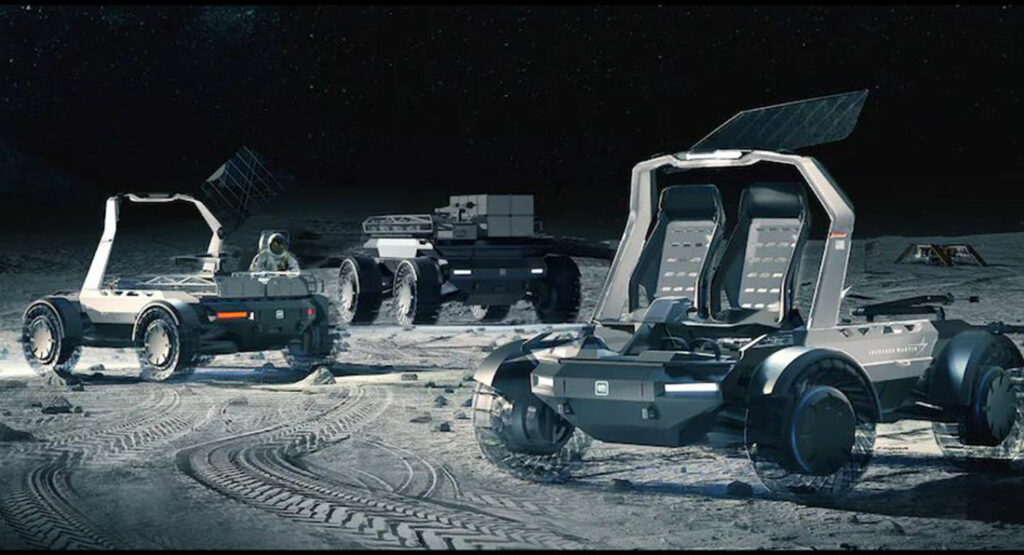The lunar terrain vehicle developed by General Motors and Lockheed Martin for NASA’s Artemis program could, if selected, use the same Ultium batteries as the carmaker’s production EVs.
Creating an EV for NASA that can endure the rigors of the Moon will be no easy task. Not only will the vehicle need to operate in temperatures ranging from 260 to minus 280 degrees Fahrenheit, but it will also need to survive abrasive lunar dust.
“We’re going to push our Ultium batteries into the harshest environment that an electric vehicle battery has ever seen,” GM’s chief engineer for the lunar mobility program, Brent Deep, said. “With that, we’ll understand how to control our batteries and make sure that they operate in that environment and continue to offer autonomous and human-operated driving capability and reliability. And then those same batteries will be in our Ultium products here on Earth.”
Read More: GM Teams Up With Lockheed Martin To Build NASA’s Next-Gen Lunar Rover
In developing the lunar vehicle, GM will take lessons from what it learned in conducting expansive virtual testing for the GMC Hummer EV pickup during the coronavirus pandemic.
“For the lunar rover, you can’t have a physical backup on some of these things because you can’t go drive a vehicle on the Moon,” Deep added. “Having that confidence from the virtual development on Hummer gives you a direct application to the lunar rover.”
It’s not just GM’s Ultium batteries that will be put to the test on Earth’s only natural satellite. Speaking with Auto News, program engineering manager at GM, Lisa Talarico, revealed that navigating the Moon could aid in the advancement of the brand’s autonomous driving technologies.
“We can give the astronaut more information on what is the best way to get to a certain location, what is the optimal path, what would the AV side path take if the astronaut wasn’t driving,” Talarico said. “Because we’re off-road and there’s more freedom in where you can travel versus staying directly just in your lane on your road here on Earth.”







